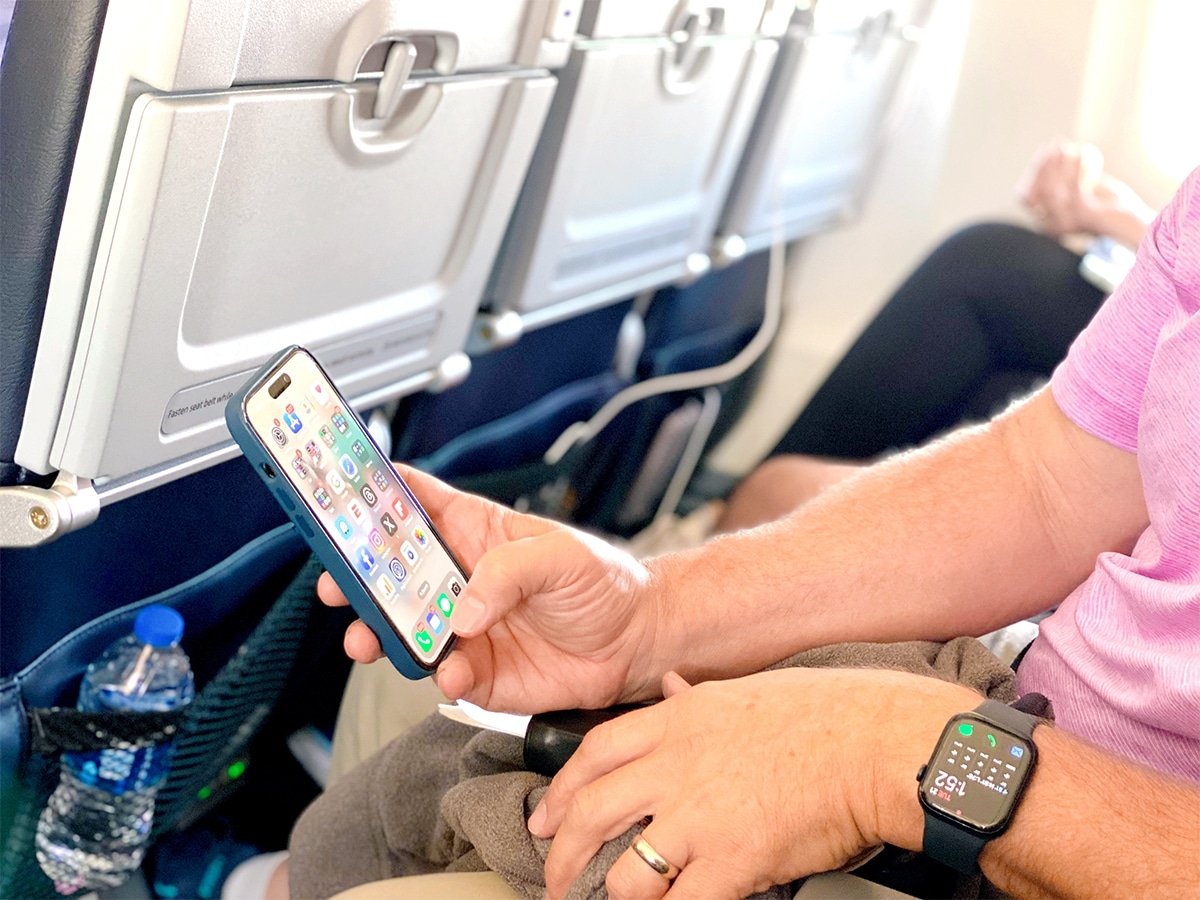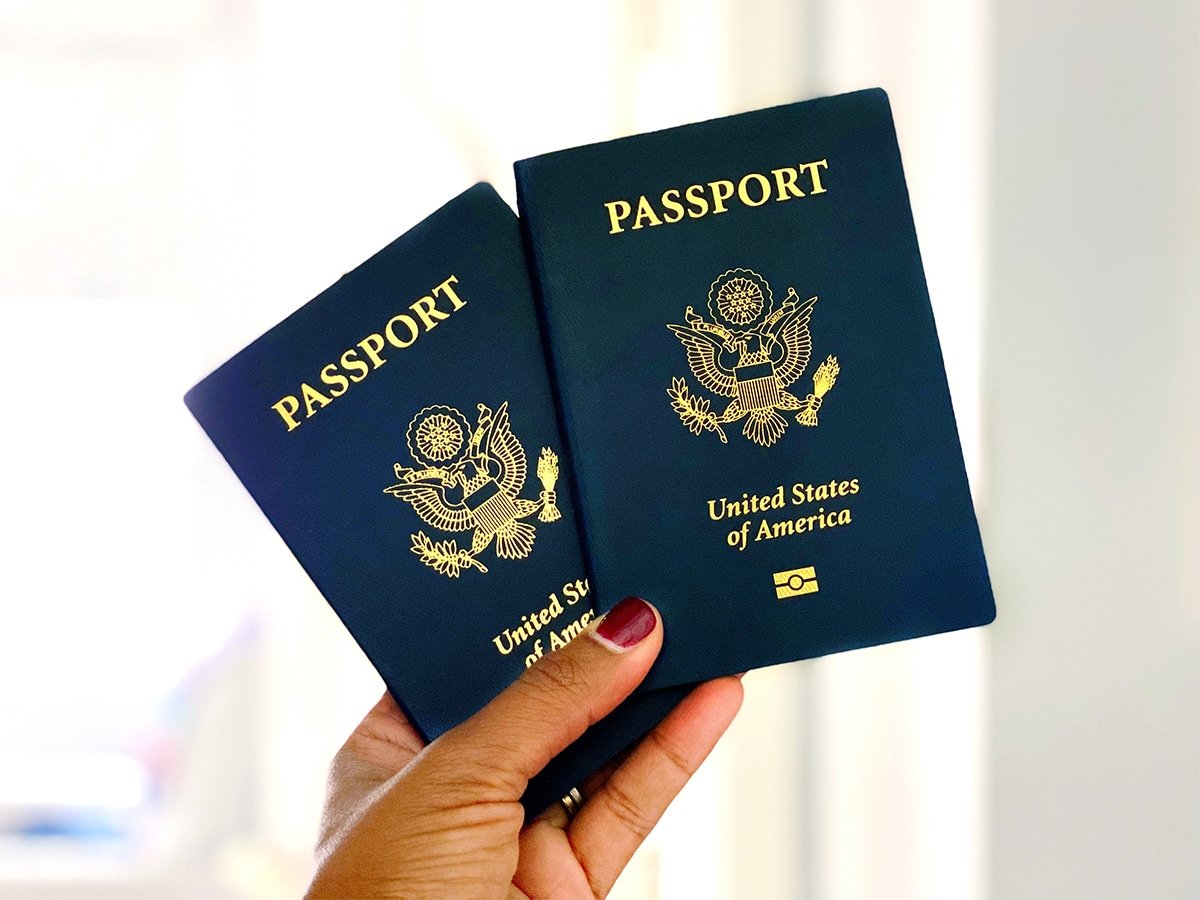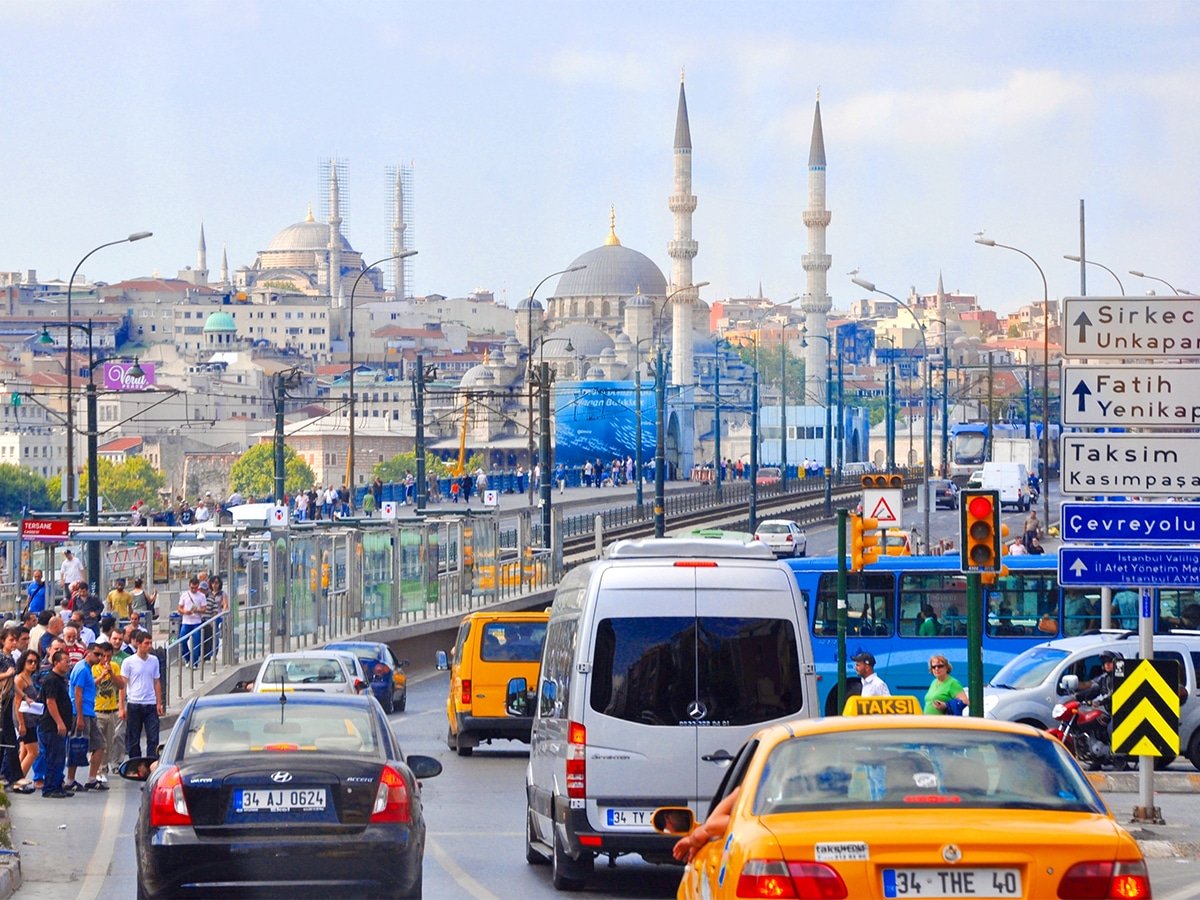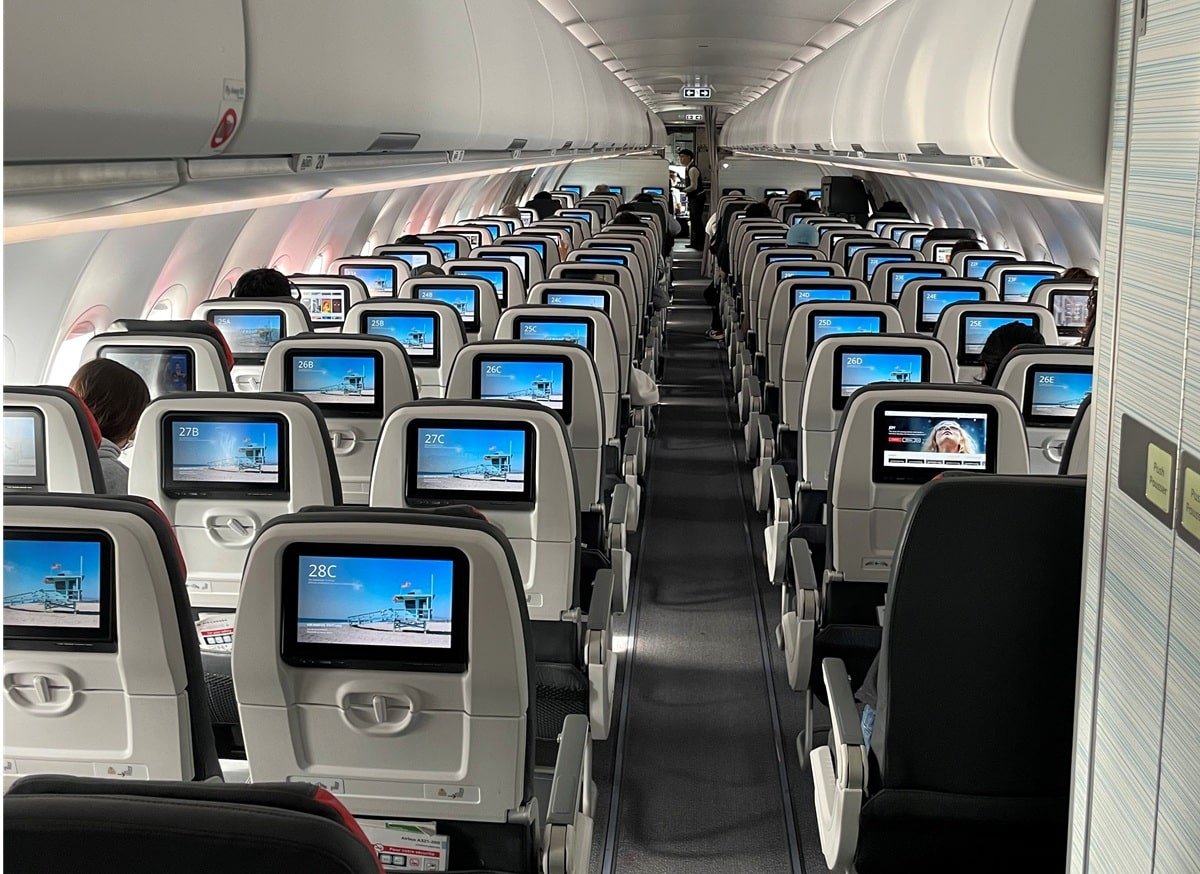This post contains references to products from one or more of our advertisers. We may receive compensation when you click on links to those products. For an explanation of our Advertising Disclosure, visit this page.
There’s no doubt traveling can be one of the most exciting and fulfilling experiences, but it can also come with its challenges. Whether you’re heading on a vacation, business trip, or a special event, it’s important to keep these 12 Golden Rules of Travel in mind to make your journey more enjoyable and safer.
1. Be nice to everyone
If you subscribe to my newsletter, then you know that my number one travel (and life) tip is to always be genuinely nice to everyone. If you are, then people will go out of their way to be nice in return. I’ve flown millions of miles, become good friends with gate agents, supervisors and I even dated a flight attendant so I know it works. It’s also common sense but you will be amazed how many passengers don’t follow this advice. If you really want to go the extra mile, then do this.
2. Have a Plan B
No matter how well you plan your trip, things can (and will!) go wrong. Flights get severely delayed or canceled and weather can be unpredictable. Always have a back-up plan in case your original plans fall through. Having alternatives in mind can reduce stress and keep you calm in unexpected situations.
3. Have important numbers and apps in your phone
Before I head out of the door, I make sure I have all the important phone numbers and apps I’ll need downloaded, updated and ready to go on my phone. This includes your hotel’s contact number, airline, travel insurance, emergency contacts and any apps for local transport or translation. Having all this information in one place can save valuable time when you need it most. If your flight does get delayed or canceled, follow this advice.
4. Always arrive a day or two early for important events
If you’re traveling for an important event, like a cruise departure or your brother’s wedding, it’s always wise to arrive a day or two ahead of time. This gives you ample time to rest, adjust to the time zone, enjoy the destination and most importantly, avoid the stress of last-minute delays that could impact your schedule.
5. Never take a ‘no’ from someone who is not empowered to give you a yes
I learned this tip from travel guru Peter Greenberg who has been flying 450,000+ miles a year for the last three or four decades. When traveling, you may encounter situations where someone says “no” to your request, whether it’s a change in flight or a room upgrade. Always remember that some people are not in a position to grant exceptions. Politely ask to speak to someone with more authority or escalate the matter. Often, the person you speak with can make all the difference.
6. Pack carry-on with important items (valuables, medicines, etc.)
Ideally, it’s best to travel with carry-on only since it gives you more freedom, saves money, time (you don’t have to wait around at baggage claim for what seems like an eternity), and you don’t have to worry about an airline losing your bag. However, if you do have to check a bag, make sure to pack your essential items, like valuables, passports, important documents and medications in your carry-on. You don’t want to risk losing these things if your checked luggage gets delayed or lost. It’s also helpful to have a small emergency kit with essentials like snacks, chargers and personal care items. Here’s what’s inside my carry-on bag. And if you are checking a bag, don’t forget to pop an Apple AirTag inside for the invaluable peace of mind it provides knowing that you can track your bag’s location yourself and share that information with the airline if necessary.
7. Dress in layers
One thing I learned over the years is that planes, museums, restaurants and convention centers can be freezing. But … they can also be extremely hot, which is why it’s imperative to dress in layers. That way you’re always prepared. I always bring a sweatshirt on the plane, even if I’m flying on a short tropical inter-island flight.
8. Double-check your passport’s expiration date and keep a copy
If you’re traveling internationally, double-check that your passport is valid for at least six months beyond your planned return date. Even if you’re only going for a week and your passport will expire a few months after your trip, some countries may not let you in. Do your research before having to scramble like this traveler. Also, keep a photocopy of your passport in a separate location, or a digital copy in case it’s lost or stolen during your trip.
9. Research destination for customs and scams
Research the customs, culture and common scams at your destination before you arrive. This will help you avoid misunderstandings and stay safe. Whether it’s tipping etiquette, dress codes, or how to spot fake tour guides, being well-informed can make your trip more enjoyable and secure. I was once scammed in Budapest because I didn’t take five minutes to read the State Department’s warnings on Hungary (or other countries). Here’s the story, as well as other notorious travel scams to be aware of. In addition to reading U.S. travel advisories, it’s also a good idea to cross reference your research with the advisories of our English-speaking allies like Australia, Canada and the United Kingdom.

10. Use legitimate taxis
When getting around a new destination, always use licensed, legitimate taxis or rideshare services. Avoid accepting rides from unmarked cars or drivers who approach you unsolicited. This helps you stay safe and avoid potential scams, especially in unfamiliar locations. I know it may seem easy to just accept a ride from the person outside of baggage claim offering rides but they’re usually not trustworthy in terms of price and sometimes safety.
11. Get travel insurance
Long before I became a brand ambassador for a travel insurance company (with whom I’m no longer working), I was a firm believer in travel insurance. It can give you a peace of mind and save you hundreds of thousands of dollars, God forbid something goes really wrong. Just make sure you read the fine print and get the coverage that best fits your trip. I travel so much that I get an annual plan.
12. Pay with a credit card
I see a lot of people making the mistake of paying for their travel with a debit card. While cash may still be king in some cases, using a credit card offers significant advantages when traveling. A credit card can protect you against fraud and unauthorized charges, as they typically offer better consumer protection than debit cards. In addition, many premium credit cards come with added perks, such as travel insurance, purchase protection, and rewards points that can be redeemed for future trips. Credit cards also provide a more convenient and secure way to make transactions, especially in foreign countries where your debit card may not be accepted or where fees can be high.
I could easily write 100 tips, but that might be a bit overwhelming! If you think I missed any must-know rules that belong in the top 12, feel free to share them in the comments below.
KEEP READING:
–12 passport tips that will save you time, money and headaches
–The most important thing I do when I travel internationally is …
–Rick Steves got pickpocketed in Paris: Here’s what he wants you to know
–The most important thing for travelers to do according to a safety expert
–What you need to know about renewing or getting an emergency passport in the U.S.
Want more travel news, tips and deals? Sign up to Johnny Jet’s free newsletter and check out these popular posts: The Travel Gadget Flight Attendants Never Leave Home Without and 12 Ways to Save Money on Baggage Fees. Follow Johnny Jet on MSN, Facebook, Instagram, Pinterest, and YouTube for all of my travel posts.








I think you pretty much nailed them all of the main ones unless you do stupid things like I did on a recent trip to Puerto Vallarta. So the 2.5 things I would add to that list for myself for bonehead moves:
1. Never travel with valuables with clothing that you can take off your body and leave behind.
2. Have pertinent phone numbers and pass code information you may need in your wallet and (for redundancy) suitcase in case you lose your phone. 2.5 if you use an ATM or a credit card, make sure you can withdraw money and your CC works.
What if you lose your phone? What if you leave your travel vest on the chair after you’ve eaten breakfast? Here’s what happened to me and it only took one bonehead move which turned into a bit of a costly fiasco.
It all began by me leaving my phone in my friends car well getting dropped off at the airport — A BIG bonehead move.
I was traveling to Puerto Vallarta from Kona Hawaii via Vancouver BC and onto Vallarta. It all had begun when I had left my phone in my friends car when he dropped me off at the airport in Kona HI. I didn’t realize it until I was in the line close to TSA and started patting my travel vest I was wearing. I thought initially the battery was my phone. I couldn’t call my friends cell number because I didn’t know his cell number. Making matters worse there’s no pay phones at the airport. I had painted myself in a corner.
I decided to fly without my phone because I was going to meet my girlfriend in Vancouver BC and then fly to PV from there. I spent six hours on the plane strategizing a plan how to retrieve my phone. Every scenario I could think of ended in a dead end. Two-factor authorization, not remembering my passwords, not being able to call my girlfriend because I couldn’t remember her number except for one number soon would become a big problem.
ATMs
I don’t use ATMs but I had read that some of the best ways to exchange money if you want to use pesos in Mexico is to do it with an ATM card. There are some situations where it’s good to have the local currency. I didn’t have one so I went to my bank and got one, checked out that it was working by checking the balance per the bank clerk recommendation by checking if would print out the balance. It did but I didn’t think to do a withdrawal to make sure it would spit out some money. My mistake. When I got to Mexico it didn’t work because the bank never set it up so I could actually withdraw money. I had told the bank clerk the reason I was getting the ATM card the was traveling to Mexico which was the bank’s screw up. But it didn’t matter whose fault it was. I couldn’t get the money. The Turns out the clerk and I didn’t know that I needed an extra form so I could actually withdraw money so it was never set up correctly. Try calling your bank a few times without knowing your last deposits and trying to get verified when you don’t have your phone and you’re in Mexico. That was another little frustrating fiasco in itself.
I had a lot advice from a lot of smart people and none of their advice was any good. I thought a good solution is to just have my friend ship my phone to the hotel in Mexico, but my friend was told by the shipper that they can’t ship phones to Mexico because of the battery in the phone.
Again, I was “clever” and I had a travel vest on, the type with all the pockets. I had my AirPods Pro case, $700 in emergency cash. The cash was inside an envelope with my name and phone number on it inside the vest in a Velcro pocket. It was after eight days in Puerto Vallarta my girlfriend and I were eating breakfast at the marina. I had drank too many margaritas at the pool the previous night and I developed a fever and was feeling miserable. The banana pancakes didn’t do the job. I ended up getting strep throat. I took off my vest at breakfast because I was hot. The only reason I brought my travel vest to breakfast was because I wanted to exchange some cash for pesos because I couldn’t use my ATM card but I was feeling too lousy after breakfast to even think about exchanging dollars for pesos. It turned out I had left my travel vest there with the cash with the AirPods in the pockets. Again, I never used the AirPods because I didn’t have my phone, Ha! — It was still in Kona Hawaii. Anyway, I didn’t know it but I had left my vest at the table eating breakfast until it was too late. I didn’t realize I was missing my vest until a couple days later. I couldn’t remember where I had left it. Well it turns out that my AirPods Pro are at the restaurant. Whoever “found” my vest has my AirPods and they’re using them at the restaurant where we ate breakfast as I type this. I’ve been opening the app from time to time for the past couple of months and I keep seeing my AirPods there. I know this because I can see them on the Find My app. But I can’t do much about it. That’s frustrating. Not everybody is honest and finding a vest with $700 (with a name and phone number) in it and some AirPods to boot. For many that would be a Cha Ching.
Losing my vest in Margaritaville could be my fault. But wait! I got the travel vest idea from Johnny Jet… so must be his fault.
I know, I know. It’s my own damn fault…